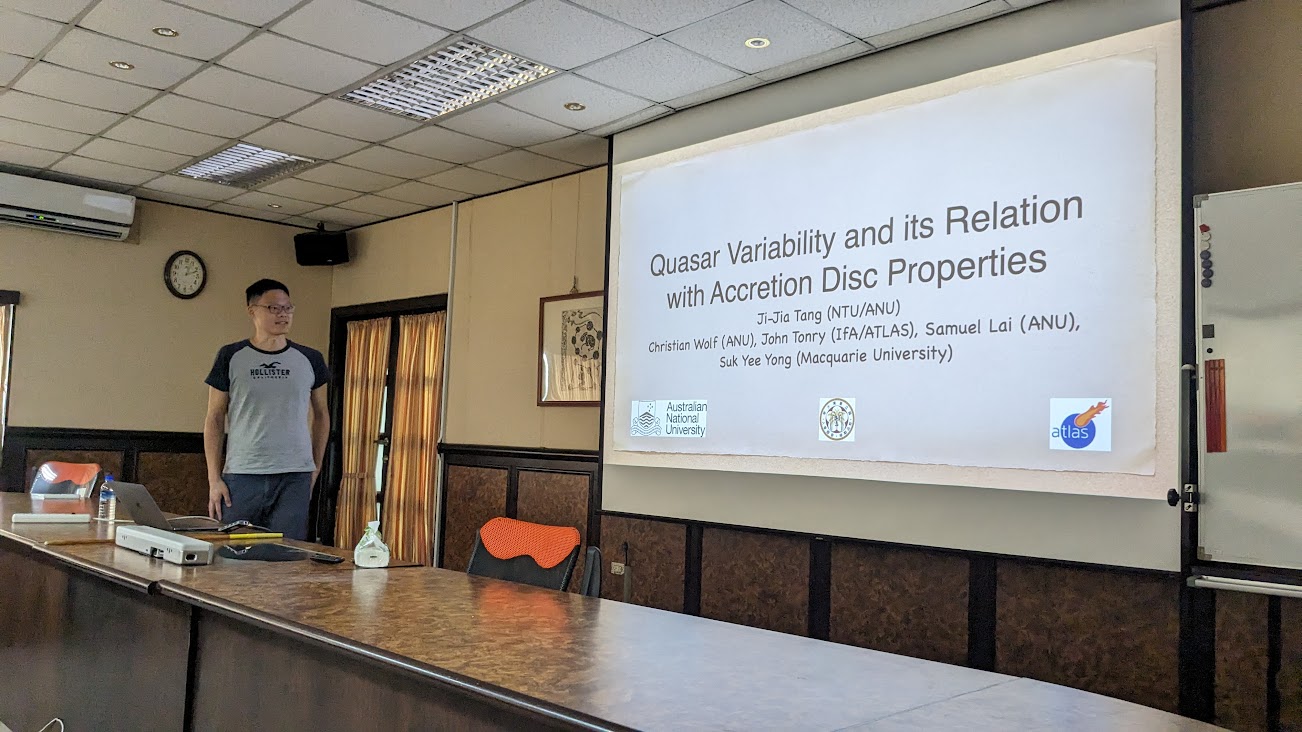Dr. Ji-Jia Tang (NTU)

"Quasar Variability and its Relation with Accretion Disc Properties"
時間/地點: 2023-10-13 14:00 [S4-1013]
摘要:
Rapidly growing black holes are surrounded by accretion discs that make quasars the brightest objects in the Universe. Their brightness is known to be variable, but the causes of this are not implied by simple disc models and still debated. Due to the small size of accretion discs and their great distance, there are no resolved images addressing the puzzle. In this work, we study the dependence of their variability on luminosity, wavelength, and orbital/thermal timescale (t_orb, or t_th). We use over 5,000 of the most luminous quasars with light curves of almost nightly cadence from > 5 years of observations by the NASA/ATLAS project, which provides ~2 billion magnitude pairs for a structure function (SF) analysis. When time is expressed in units of orbital/thermal timescale in thin-disc models in the random walk regime, we find a universal SF, independent of luminosity and wavelength, supporting the model of magneto-rotational instabilities as a main cause. In other words, we find evidence showing the variability is caused by the turbulence in the disc. Over a > 1 dex range in time, the fractional variability amplitude follows log(A/A_0) ~1/2 ×log(Delta t/t_th). We suspect the deviation from this relation can hint the disc inclination angle, but find the prediction contradicting with the inclination indicators of the broad line region. We also investigate whether the suppression of amplitude on the short timescale could indicate the disc size, which could be a novel size measuring method other than continuum reverberation mapping and microlensing.
回上一頁
